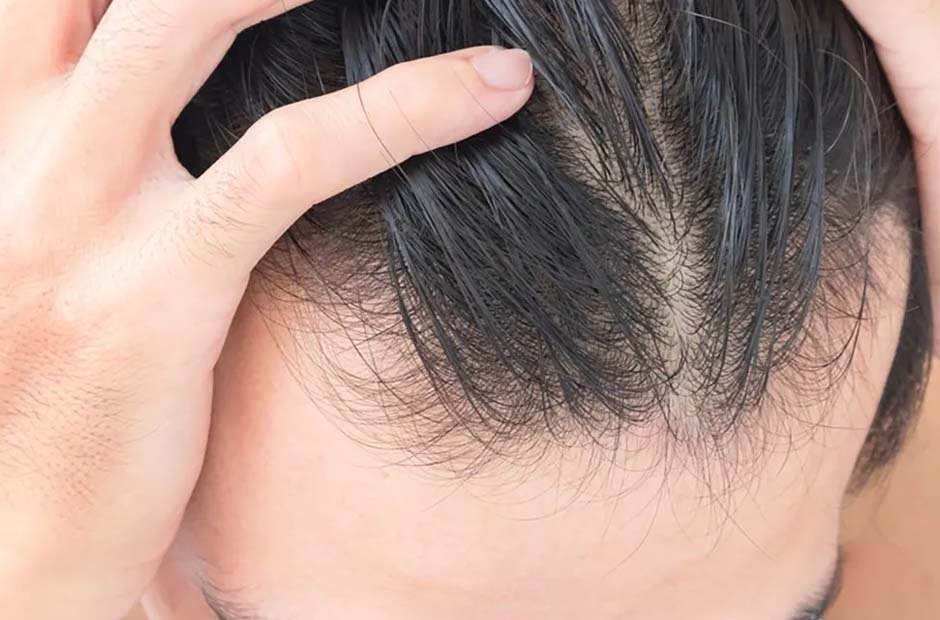Hair loss is a common condition that affects both men and women, leading to a significant impact on self-esteem and overall well-being. While there are numerous treatments available to manage hair loss symptoms, addressing the underlying causes is crucial for achieving long-lasting results.
Taking a comprehensive approach that focuses on treating the root cause of hair loss can provide individuals with effective solutions. In this article, we will explore various strategies and lifestyle changes that can help identify and address the underlying factors contributing to hair loss.
There are several causes of hair loss, including:
- Genetic Factors: The most common cause of hair loss is hereditary and hormonal factors. Androgenetic alopecia, also known as male or female pattern baldness, is inherited and results in progressive hair thinning and loss over time.
- Hormonal Changes: Hormonal changes due to pregnancy, childbirth, menopause, or conditions like polycystic ovary syndrome (PCOS) can contribute to hair loss. Hormonal imbalances can disrupt the hair growth cycle and lead to excessive shedding.
- Medical Conditions: Certain medical conditions and diseases, such as thyroid disorders, autoimmune diseases (e.g., alopecia areata), scalp infections (e.g., ringworm), and nutritional deficiencies (e.g., iron or vitamin D deficiency), can cause hair loss.
- Medications and Treatments: Certain medications, including chemotherapy drugs, blood thinners, and antidepressants, can cause hair loss as a side effect. Additionally, treatments like radiation therapy can lead to hair loss in the treated area.
Understanding the Causes of Hair Loss
Hair loss can be caused by a variety of factors, including genetics, hormonal imbalances, nutrient deficiencies, stress, and underlying medical conditions. It is important to identify the root cause of hair loss in order to develop an appropriate treatment plan.
Balanced Diet and Nutritional Support
Nutrition plays a crucial role in hair health. A balanced diet rich in vitamins, minerals, and proteins can promote healthy hair growth and prevent hair loss. Foods such as lean meats, fish, fruits, vegetables, nuts, and seeds provide essential nutrients for hair health.
Additionally, supplements like biotin, vitamin D, iron, and zinc can support hair growth. Consulting with a healthcare professional or nutritionist can help determine any nutritional deficiencies and create a personalized plan.
Managing Stress
Chronic stress can contribute to root cause of hair loss by disrupting the natural hair growth cycle. High-stress levels can lead to hormonal imbalances, affecting the health of hair follicles. Engaging in stress-reducing activities such as exercise, meditation, yoga, and deep breathing exercises can help manage stress levels.
Additionally, seeking support from a therapist can be beneficial in addressing stress effectively.
Scalp Care and Hair Hygiene
Maintaining a healthy scalp is essential for promoting hair growth. Regular washing with a gentle shampoo can remove dirt, excess oil, product build-up, thus preventing clogged hair follicles.
Avoiding harsh chemicals, excessive heat styling, and tight hairstyles can minimize damage to the hair shaft and scalp. Using conditioners specifically designed to nourish the scalp and promote hair growth can also be beneficial.
Medical Conditions and Medications
Certain medical conditions and medications can contribute to hair loss. Conditions such as thyroid disorders, autoimmune diseases, and hormonal imbalances can affect hair growth. It is important to consult with a holistic dermatologist to identify and treat any underlying medical conditions that may be causing hair loss.
Additionally, certain medications, such as those used for chemotherapy or certain antidepressants, can lead to temporary or permanent hair loss. In such cases, discussing alternative treatment options with a healthcare provider is crucial.
Professional Treatments and Therapies
In cases where the underlying cause of hair loss is more complex or severe, professional treatments and therapies may be recommended. These may include:
Prescription Medications: Medications like minoxidil and finasteride are FDA-approved treatments for hair loss. They work by promoting hair growth and preventing further hair loss.
Platelet-Rich Plasma (PRP) Therapy: PRP therapy involves injecting platelet-rich plasma derived from the patient’s blood into the scalp. It can stimulate hair growth by promoting the regeneration of hair follicles.
Laser Therapy: Low-level laser therapy (LLLT) uses red light to stimulate hair growth. It can be done at home with handheld devices or in professional settings.
Hair Transplantation: In cases of advanced hair loss, hair transplantation can be an option. This surgical procedure involves transplanting hair follicles from a donor site to the balding areas.
Conclusion
Treating the root cause of hair loss requires a comprehensive approach that addresses the underlying factors contributing to the condition. By understanding the causes of hair loss, maintaining a balanced diet, managing stress levels, practicing proper scalp care, addressing medical conditions and medications, individuals can take control of their hair loss.
Consulting with holistic dermatologist can provide guidance and personalized treatment plans based on individual needs. With the right strategies and a holistic approach, individuals can achieve effective and long-lasting results in their journey towards healthier hair.
















